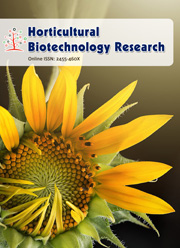Heterotic expression in inbreds derived from four different base populations in maize (Zea mays L.).
DOI:
https://doi.org/10.25081/hbr.2018.v4.3464Abstract
The concepts of combining ability and heterosis are the fundamental tools for enhancing productivity of different crops. The main objective is to study the usefulness of inbreds derived from four different base populations namely advanced generations of single cross hybrids, three way cross hybrids, hybrid mixtures and composites by analyzing the combining ability of inbreds and crosses derived and the heterosis obtained for important characters. One hundred and forty four maize inbreds derived from four different base populations namely advanced generations of single cross hybrids, three way cross hybrids, hybrid mixtures and composites were studied for their heterotic expression. The results indicated that composite and hybrid mixture base populations shall be of great use in deriving genetically divergent inbreds and single cross hybrids with significant standard heterosis suitable for commercial exploitation.






 .
.